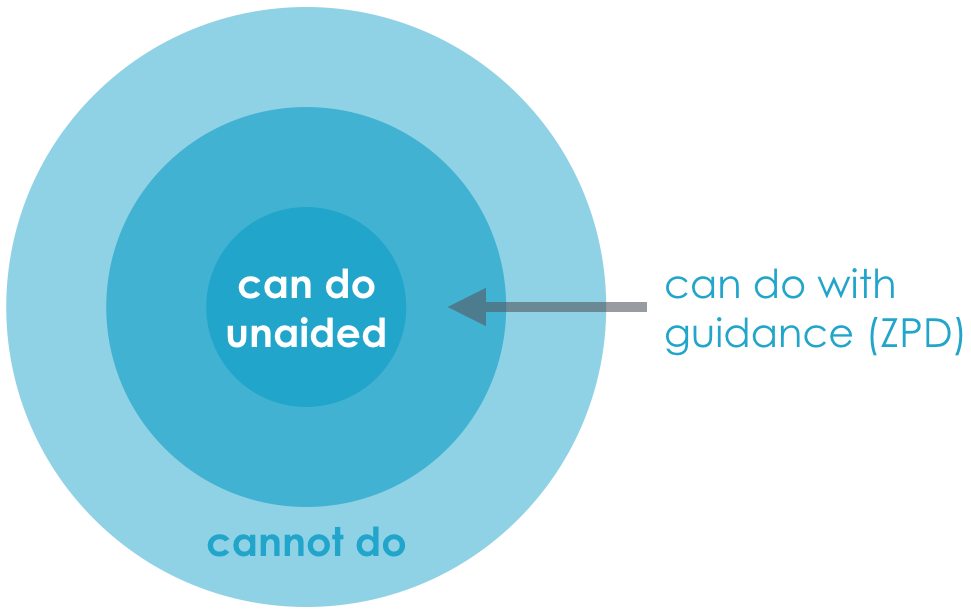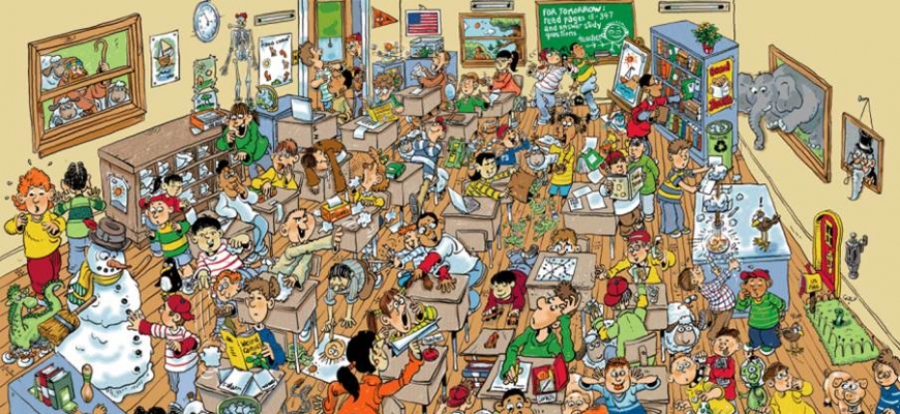Let’s start with a trip down memory lane. When I was at Secondary school we"Each country was set up on a table." didn’t do ‘fun’ very much, and my classmates were generally noisy and restless. But I remember one Geography lesson, when we had the chance to run our own ‘countries’. Each country was set up on a table and we traded resources with our classmates, with the goal of making our country the most successful in the classroom. There were also chance cards - we quickly learned what a dramatic effect natural disasters could have on a country!
This was unlike any Geography lesson we’d had before; definitely more interesting than the time we went and counted cars in town. My classmates got the chance to be active, we were excited and engaged.
There’s a lot of emphasis on learning through play during pre-school, but less so as children get older. The fact that I even remember a Geography lesson from years ago is testament to how much more valuable play-based learning can be. I’m not going to rely on my own memories as evidence though, so let’s take a look at something a little more robust.
The science behind play-based learning
The Zone of Proximal Development
There are lots of different ways that children play, all with their own benefits - from getting exercise with skipping games to developing social skills through a game of hide and seek. Playing can be initiated by a child, or led by an adult.
Child-initiated (free) play lets kids take control of their activities, coming up with their own goals and ideas. This type of play leaves children to explore as they wish, but learning is limited to what the child can do without direction.
In adult-led play, a teacher (or parent) plans an activity and guides the child through it. Children can learn new skills with support and ask questions as they go. It also means that the activity can have a pre-determined purpose, such as teaching a particular concept.
If we take a look at Vygotsky’s ‘Zone of Proximal Development’ (ZPD), you can see how adult-led play can support learning:

The middle circle shows a child’s current level of knowledge; this is where they will be when playing on their own. The ZPD represents the tasks that children can accomplish with support from a teacher, parent or more able peer, which is known as scaffolding.
Giving all students the same piece of work to complete will mean some are not challenged at all and some will be past their limits, even with guidance. Through play-based, adult-led learning, every child can learn at their own pace.
Holistic development
The areas of development can be divided into three groups:
- cognitive (eg memory, concentration)
- physical (eg hand-eye coordination, balance)
- social (eg sharing, communication)
These areas overlap and support one another. Here’s an example: children develop the muscles they need to write through larger movements, such as painting. Writing develops children’s ability to communicate and think imaginatively, improving social and cognitive skills.
Playing encourages holistic development. For instance, I once watched a teacher using a resource to teach his students about coding. The children had to move large blocks around to solve the problems he gave them, running around to beat the time limit while also communicating and working together. As well as really enjoying the experience (I seem to remember they nearly missed lunch!) you could see that even in a short space of time, the children were learning from one another and getting a great self-esteem boost from the immediate positive feedback they gained.
How to confidently use play-based learning in your classroom
Play-based learning can be brilliant, but requires a bit of creativity and thinking on your feet. Armed with a few ideas and the right resources, you can make learning more motivating and engaging for your students.
Quick lesson ideas
- Bingo (multiple subjects). Make up boards with terms the class is learning, then call out the meaning of the word they need to find. You can also play Maths Bingo, with numbers on the board, calling out different sums they have to find the answer to.
- Hangman (multiple subjects). This can be played as a class to practise spelling and build vocabulary. Let students take turns to think of a word and fill in the blanks to build confidence.
- Baking (multiple subjects). A fantastic activity for learning everything from measurement, to reading and following instructions closely. You could challenge your students to work out the measurements they need to make enough biscuits for a certain number of people.
- Construction challenge (Science). Challenge your students to build something out of recycled materials that achieves a goal - for example, a car that can safely transport an egg the furthest, or a boat that will move fastest when blown by a fan.
- 3D shape craft (Maths). Give students instructions on how to build 3D shapes using card and ask them to make their favourite TV character. Once they’ve made an item you can challenge children to make a second one, twice or half the size of the original, to get them working with measurements.
- Story stones (English). Make some story stones by drawing simple pictures, such as a tree or a sun, onto pebbles (you could get your students to make one each). Put them in a bag so they can’t be seen and have a student take out five pebbles. They then tell the class a story using the pebbles (eg once there was a tree and every day, it waved to the sun). This is great for developing language, speaking and listening skills.
Choosing resources to support play-based lessons
There are some amazing teaching games and materials available that will make it easy for you to get a little more play into the school day. Some include suggestions for lesson plans, free online resources and guides on linking the lesson with the National Curriculum.
- Construction sets are great for teaching Science and Design and Technology.
- Child-friendly equipment (eg magnifying glasses, weights, magnets) can bring Science and Maths to life.
- Board and card games have a fun competitive element and can cover more in-depth facts about a range of topics.
- A webcam has a whole host of possibilities - students can record and playback experiments, deliver news reports on historical events and more.
I’m a big fan of meeting kids where they are to take them where you want them to be; the current generation has grown up in the digital age and love their tablets and tech. There are lots of really good learning apps that can track progress and give children immediate feedback, providing the scaffolding children need to learn even when you’re busy with other students.
Play-based learning can motivate students and inspire questions you had never thought to answer. It’s all about making learning as meaningful and interactive as possible so that children are immersed in the experience. You’ll know you’ve got it right when you see that sparkle in your students’ eyes that says they’re engaged, and they’re learning.
Do your pupils learn through play? Share your stories below.


















